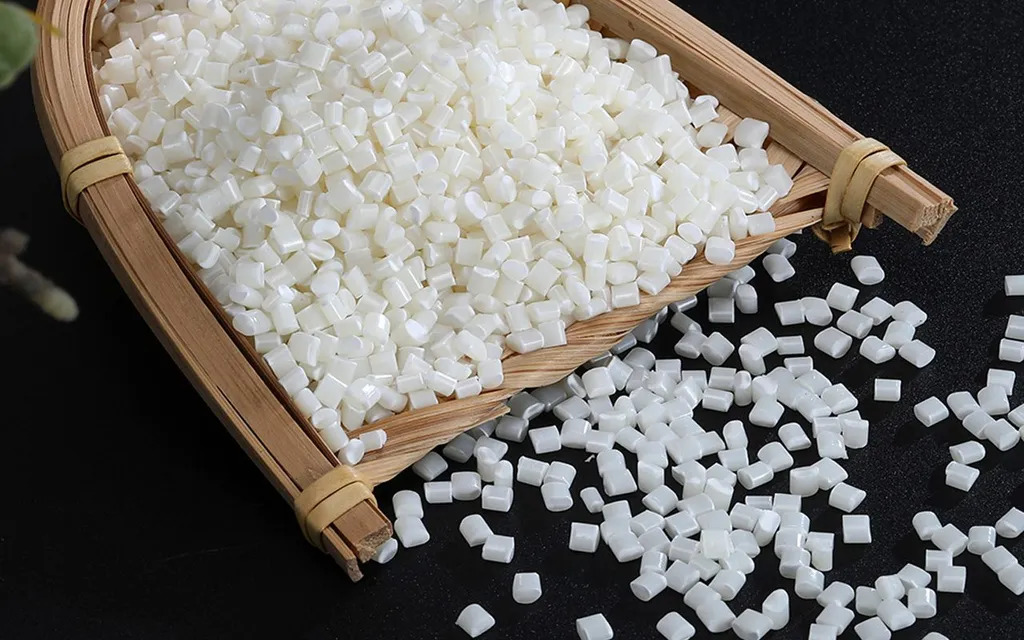In an era of growing environmental concerns, industries are under pressure to replace traditional plastics with greener alternatives. Among them, ABS resin (Acrylonitrile Butadiene Styrene) remains a cornerstone in automotive, electronics, and household product manufacturing. But as a petroleum-based plastic, is there a path forward for more sustainable versions like biobased or recycled ABS? Let’s dive into the current developments, possibilities, and barriers surrounding green ABS resin.

Is there a path forward for more sustainable versions like biobased or recycled ABS resin?
1. Why the focus on ABS resin?
ABS resin is a popular thermoplastic known for its strength, impact resistance, surface gloss, and ease of molding. It’s found in everything from car interiors and appliance housings to Lego bricks and laptop shells. However, its reliance on fossil fuels and limited biodegradability make it a prime target for sustainability efforts.
As industries seek to meet carbon reduction goals and circular economy principles, transforming ABS resin into a more eco-friendly material has become a major point of innovation.
2. What is recycled ABS resin?
Recycled ABS resin refers to ABS plastic that has been recovered from post-industrial or post-consumer sources and then reprocessed for reuse. This typically involves collecting used ABS products, cleaning and separating the material, and re-melting or compounding it into pellets for manufacturing new items. Depending on performance needs, recycled ABS can either be used on its own or blended with virgin ABS resin to balance quality and cost.
This approach significantly reduces the reliance on virgin fossil-based resources and helps divert plastic waste from landfills or incineration. Moreover, the carbon footprint of recycled ABS is typically lower than that of new, petroleum-derived ABS, offering an environmental advantage for manufacturers committed to sustainability.
However, recycled ABS resin also presents certain challenges. The quality of the recycled material can be inconsistent due to contamination or degradation during previous use. This can result in reduced mechanical properties over time, particularly if the material is recycled multiple times. As a result, recycled ABS is often better suited for less demanding applications, such as packaging, toys, or some construction products, where slight variations in performance are acceptable.
Despite its limitations, recycled ABS is becoming increasingly popular as industries seek more sustainable practices and as recycling technologies continue to improve.
3. What is biobased ABS resin?
Biobased ABS aims to replace one or more components of traditional ABS with raw materials derived from renewable sources. ABS is a terpolymer made from three monomers: acrylonitrile, butadiene, and styrene. While biobased styrene and butadiene have been explored from sources like sugarcane ethanol and biomass gasification, acrylonitrile is more challenging.
Recent advancements have seen companies like Trinseo develop bio-attributed ABS resins using a mass balance approach, achieving up to 95% reduction in product carbon footprint. Additionally, Toray Industries and Idemitsu Kosan have initiated projects to produce biomass-derived ABS resin, aiming to establish a supply chain for plastics made from biomass naphtha.
These efforts underscore the importance of ongoing innovation in renewable monomer development as part of the broader push toward sustainable polymer alternatives.
4. Challenges to overcome
While the development of recycled and biobased ABS resin holds strong promise, it is not without challenges. One major barrier is the limited availability of sustainable biomass feedstock. Since renewable resources are also in demand for food, fuel, and other bioplastics, the competition for these raw materials puts strain on scaling up production of biobased ABS.
Cost remains another significant hurdle. Both recycled and biobased ABS resins are generally more expensive to produce than their virgin fossil-based counterparts. This cost disparity makes it difficult for manufacturers to switch, especially in price-sensitive markets. Moreover, maintaining consistent product quality is essential—recycled ABS can vary in performance due to contamination or polymer degradation over multiple recycling cycles. Similarly, biobased ABS must meet strict performance standards, particularly in sectors like automotive or electronics, where reliability and mechanical integrity are non-negotiable.
Beyond production, infrastructure also lags behind. Effective recycling systems and facilities capable of handling biobased alternatives at industrial scale are still underdeveloped in many regions. Building a circular supply chain for ABS resin will require collaboration between industry players, governments, and research institutions to establish viable closed-loop systems.

Building a circular supply chain for ABS resin will require collaboration between industry players, governments, and research institutions.
5. Industry efforts and pilot initiatives
Despite these hurdles, the plastics industry has begun moving toward sustainable ABS resin solutions. Companies like Trinseo have introduced their own ABS resins, offering low base color, high thermal stability, and superior lot-to-lot consistency, tailored for applications requiring high purity and performance. Toray Industries and Idemitsu Kosan have also agreed to build a supply chain for plastics made from biomass naphtha, aiming to produce biomass-derived ABS resin.
In academia and research centers, scientists are actively exploring methods to improve compatibility between biopolymers and existing ABS structures. Their work focuses on refining monomer sourcing, enhancing mechanical properties, and ensuring scalability for industrial production.
These collective efforts signal a growing commitment across sectors to reduce the environmental footprint of ABS resin. Although commercial-scale biobased ABS is still in its early stages, the groundwork being laid by private companies and public institutions points toward a more sustainable future for this widely used plastic.
6. Are we there yet?
The transition to sustainable ABS resin is in progress, but not yet fully realized. Recycled ABS is already viable for many lower-spec applications, and biobased ABS shows strong long-term potential. However, achieving full circularity and large-scale adoption requires ongoing collaboration between manufacturers, policymakers, and researchers.
In the meantime, hybrid solutions—such as blends of recycled and virgin ABS or partially biobased ABS—can help bridge the gap. Consumer awareness, brand pressure, and regulatory support will also accelerate the shift toward more sustainable plastics.

The transition to sustainable ABS resin is in progress, but not yet fully realized.
7. Conclusion
While ABS resin is not yet fully green, the progress toward recycled and biobased alternatives is undeniable. With the right investments and innovations, tomorrow’s ABS could be lighter not only in weight—but in environmental footprint as well.
8. About EuroPlas
EuroPlas, one of the world’s leading masterbatch and compound manufacturers, offers high-performance ABS compound solutions that cater to diverse industrial needs. With advanced formulation expertise, EuroPlas delivers ABS compounds that enhance impact resistance, dimensional stability, and surface finish—ideal for automotive interiors, appliance housings, consumer electronics, and more.
Produced in state-of-the-art facilities across Vietnam and Egypt, EuroPlas ABS compounds meet strict global standards while enabling cost-effective, reliable production for customers in over 95 countries. Currently, EuroPlas offers 3 ABS compounds: